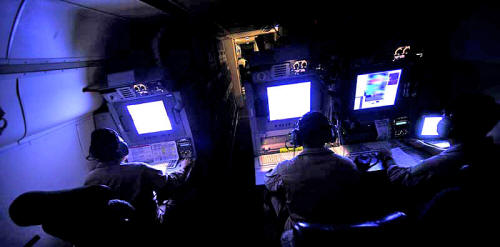|
(Reporter)
originally published on
DarkGovernment
The Pentagon’s surveillance net is massive. But it was holes and seams.
Spy drone videos and communications intercepts may be aimed at the same target. Analysts have a hard time flipping easily from one kind of intel (intelligence) to the other, however - allowing those targets to get away.
So the military is working on an out-there idea to fix the problem:
If it works as planned, it’ll be a whole lot harder to slip through that Pentagon net. No surprise that DARPA, the military’s blue-sky research arm, is the agency behind the lofty five-year program, called 'Insight.'
The agency’s goal is to replace “largely manual
exploitation and…chat-based operator interactions” with a system that mines
different inputs, including drone footage and on-the-ground intel, and
quickly stitches together the data to identify potential threats.
DARPA wants an interface that’s adaptable,
letting users provide context and pick the best surveillance combo for a
given situation.
The agency’s solicitation cites a handful,
including the recently-launched
PerSEAS, a program to design complex
algorithms that can somehow spot threats based on little more than “weak
evidence.”
The agency’s creating an entire “Insight Test Bed,” to be located at Fort Irwin’s National Training Center, that’ll mimic “real world operational settings,” complete with scripted scenarios. In hopes of fast-tracking ongoing programs, DARPA’s also prepping a “Development Incubator” of unclassified data and evaluation results for contractors.
The goal is to boost collaboration and lower the cost of systems testing for developers - not to mention make it easier to integrate their work into Insight’s eventual surveillance depository.
|

